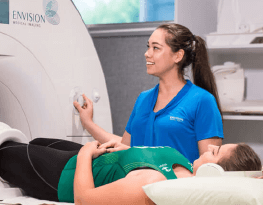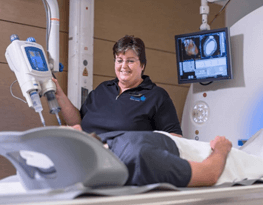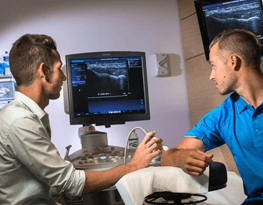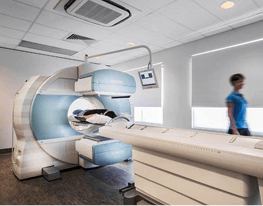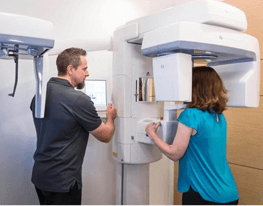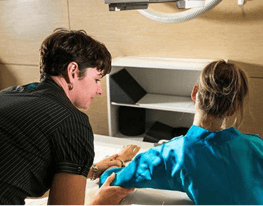What is a LD CT Chest scan?
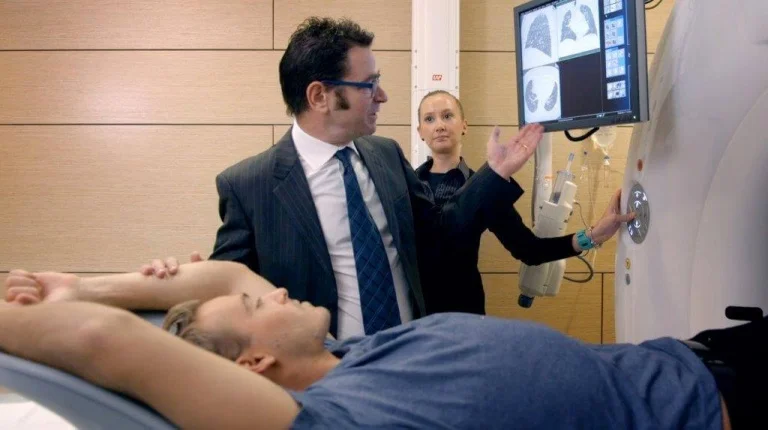
A Low-Dose (LD) CT Chest scan uses low dose CT Technology to examine the chest, including lungs and heart. This type of scan is often used in people who are considered at high risk of lung disease or infections.
LD CT scans produce images of sufficient quality to detect many abnormalities in the chest while using up to 90 percent less ionising radiation than a conventional chest CT scan. Our state-of-the-art Siemens Somotom Force CT scanner features a turbo flash mode which allows us to perform ultra-low dose Chest CTs at a comparable radiation dose to a Chest X-ray.
LD CT Chest scan
What happens during a LD CT Chest scan?
A. Before your scan
What to bring
- Your request form
- Any relevant previous imaging
- Your Medicare card
Preparation – In the week before your scan
You must advise us of any blood-thinning medication you are taking such as Aspirin, Warfarin, Plavix or Iscover. You may need to stop taking certain medications for a period of time before your treatment. Please discuss this with your doctor or specialist who is prescribing these drugs or contact us for advice. You may need tests to determine your vulnerability to bleeding from this injection. If you have heart disease, please consult with your doctor with regards to your fitness for this procedure.
Preparation – On the day of the scan
You will be asked to fill out a questionnaire regarding your health status, medication, and any known allergies. Please inform us if you have heart disease, bleeding disorders, are on blood thing medication or if there is any chance you may be pregnant.
B. During your CT-Guided TM Joint Injection
Procedure
The radiologist will consult with you before the procedure. When you are transferred to the CT room you will be made comfortable on the examination table. The radiologists will clean your skin over the TMJ with an antiseptic and place markers. The examination table slides you into the centre of the CT machine and some preliminary pictures are taken. The radiologist will then inject a local anaesthetic with a very fine needle. A scan will then be performed to confirm the needle position and, once satisfied, the medication (usually a steroid) will be injected. Your procedure will take about 20 minutes.
Risks and side effects
CT-guided TM Joint Injection is a very low risk procedure. Find out more about CT Risks and Side Effects. Other risks associated with this procedure include:
- Pain or discomfort at the needle insertion site, or bruising.
- The facial nerve travels through this region and is occasionally affected by the local anaesthetic. This will cause the facial muscles on the side to droop. Also, blinking of the eye may be reduced. This is transient and will usually only last only 2-3 hours. We will instruct you on how to care for your eye over this period.
- Infection is very rare buy may involve redness or swelling and increased joint pain, usually after 48 hours. Increasing pain should be promptly reported to your doctor.
Any medical procedure can potentially be associated with unpredictable risks.
Who will perform my procedure?
Your injection will be performed by a specialist, supported by our medical imaging team.
LD CT Chest scan
What happens after a LD CT Chest scan?
How do I get my results?
After your appointment, the information from your scan is processed and interpreted by Envision’s medical imaging team before delivery of a report to your doctor.
Post procedural information
You will be able to return to your normal daily activities after your scan.
Medical Imaging Practice Perth
Types of Imaging
At Envision, we offer the most sought-after types of imaging for diagnostics and treatments. Our Wembley headquarters is the largest single-site radiology practice in Perth
